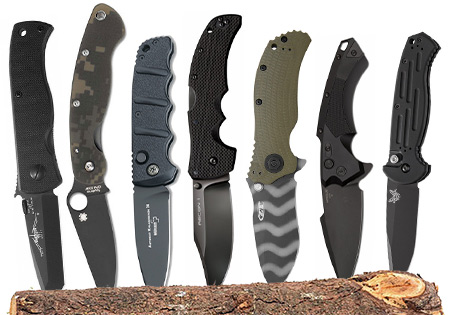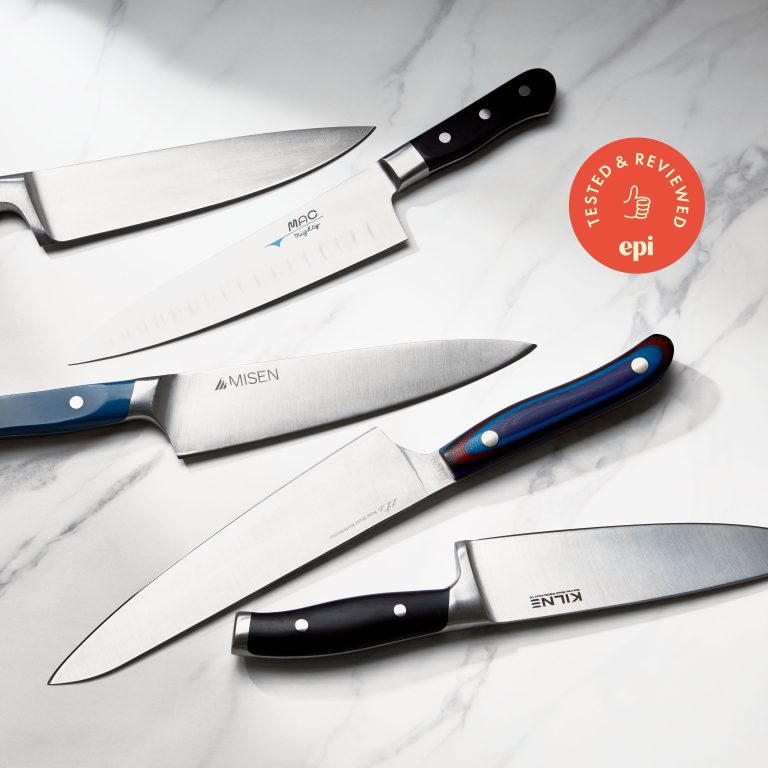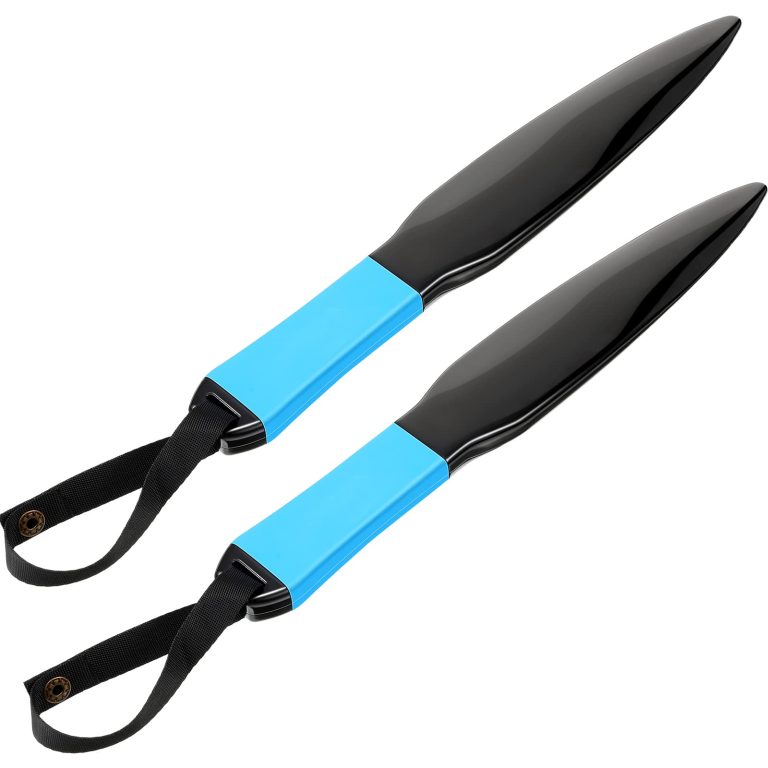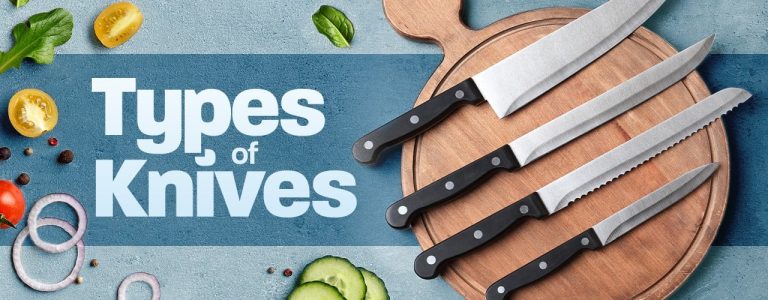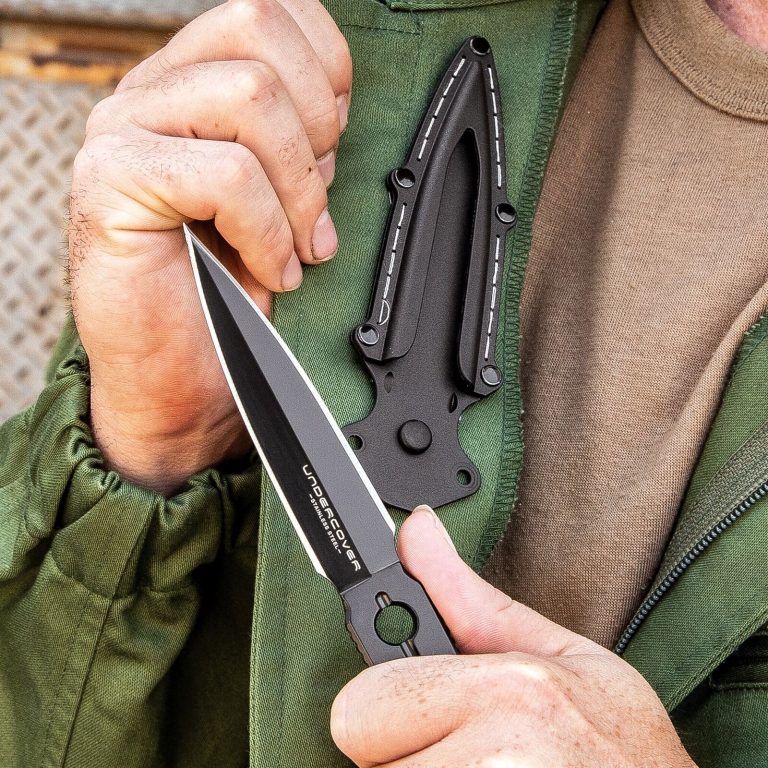Japanese Kitchen Knives: Unleash Your Culinary Mastery
Japanese kitchen knives are renowned for their precision and craftsmanship, making them indispensable tools for professional and home cooks alike. With their razor-sharp blades and unique designs, Japanese kitchen knives offer superior cutting performance, allowing for effortless slicing, dicing, and chopping.
Whether you’re a sushi chef or a culinary enthusiast, investing in a high-quality Japanese kitchen knife will elevate your cooking experience to new heights. From the iconic Santoku knife to the versatile Gyuto knife, the world of Japanese knives offers a wide range of options to suit every culinary need.
We will explore the different types of Japanese kitchen knives, their features, and how to choose the right one for your cooking style. So, let’s delve into the exquisite world of Japanese kitchen knives and discover the perfect blade to enhance your culinary prowess.
The History And Craftsmanship Of Japanese Knives
Japanese kitchen knives are renowned worldwide for their exceptional craftsmanship and precision. The history of Japanese knives dates back centuries, rooted in a legacy of knife-making tradition that has been carefully preserved and passed down through generations.
Master craftsmen serve as the guardians of these ancient techniques, honing their skills over years of practice and dedication. Their expertise and attention to detail are key factors in producing knives of unparalleled quality.
The meticulous process begins with forging, where the blade is shaped and hardened through a combination of heat and precise hammering. This step lays the foundation for the knife’s durability and sharpness.
Next comes the intricate task of shaping and grinding the blade, followed by the final polishing. Each stroke of the craftsman’s hand brings out the knife’s true potential, revealing a blade that is not only visually stunning but also incredibly sharp.
Japanese kitchen knives are a testament to the country’s rich heritage and commitment to excellence. Whether you’re a professional chef or an avid home cook, investing in a Japanese knife will undoubtedly elevate your culinary experience.
The Anatomy Of Japanese Kitchen Knives
Japanese kitchen knives are renowned for their exceptional quality and craftsmanship. The blade, an essential component, embodies a perfect synergy of balance, sharpness, and durability. Designed with meticulous attention to detail, each knife blade undergoes a complex process to ensure optimal performance in the kitchen. The V-shaped grind and edge offer extraordinary cutting power. This unique design allows for precise and effortless slicing, chopping, and dicing, making Japanese knives a favorite among professional chefs and home cooks alike. The handle of a Japanese kitchen knife combines ergonomic functionality and aesthetic harmony. Crafted to provide a comfortable grip, it enables the user to have complete control over the knife’s movements, enhancing safety and efficiency. Whether you’re a culinary enthusiast or a professional chef, Japanese kitchen knives offer an unparalleled culinary experience.
Japanese Knife Styles: A Culinary Toolbox
Japanese Knife Styles: A Culinary Toolbox
Japanese kitchen knives are revered for their exceptional craftsmanship and precision. Each knife style boasts unique features that cater to specific culinary needs.
The Santoku knife, meaning “three virtues,” is an all-purpose knife that excels in slicing, dicing, and mincing. With its **versatile** design, this knife is a favorite among both professional chefs and home cooks. The **precision** of the blade allows for effortless cutting through meats, vegetables, and even delicate herbs.
The Deba knife is a must-have for fish enthusiasts. Its thick **blade** and robust construction make it ideal for filleting, deboning, and preparing fish with **ease**. This hefty knife boasts excellent control and a sharp edge, ensuring **clean and precise cuts**.
The Yanagiba knife is primarily used for slicing sashimi and sushi. This long, slender knife possesses a single-edged **blade** that glides through raw fish effortlessly. The **sharpness** and flexibility of the Yanagiba enable chefs to achieve **impeccable slices** that are both visually stunning and delectable.
The Usuba knife is the ultimate companion for vegetable enthusiasts. Its **thin and lightweight** design allows for precise vegetable preparation, including intricate cuts and **fine julienne**. The Usuba’s sharpness and excellent handling make it a **valuable tool** in creating beautifully presented vegetable dishes.
Investing in Japanese kitchen knives not only enhances your culinary skills but also elevates the art of cooking to a new level. Whether you are a professional chef or a home cook, incorporating these Japanese knife styles into your culinary toolbox will surely enhance your cooking experience.
Understanding Japanese Knife Steel And Its Significance
Japanese Kitchen Knives
High Carbon Steel: Unparalleled Hardness and Edge Retention
Japanese kitchen knives are renowned for their exceptional quality, and the type of steel used plays a crucial role in their performance. High carbon steel, with its unparalleled hardness and edge retention, is a preferred choice among professional chefs and cooking enthusiasts. The high carbon content allows for a finer and sharper edge, ensuring precise cuts. The hardness of the steel also provides durability, reducing the need for frequent sharpening. A high carbon steel knife delivers efficiency and precision in the kitchen, making it an essential tool for those seeking exceptional cutting performance.
Stainless Steel: Balancing Durability and Corrosion Resistance
Another popular option for Japanese kitchen knives is stainless steel. This type of steel offers a balanced combination of durability and corrosion resistance. With stainless steel, you get a knife that is less susceptible to rust and stains, making it easier to maintain. While stainless steel doesn’t offer the same level of hardness as high carbon steel, it compensates with excellent toughness, ensuring the knife holds its edge for prolonged use. Chefs who prioritize ease of maintenance and long-term durability may find stainless steel Japanese knives to be an ideal choice.
Damascus Steel: The Artistry of Aesthetics and Performance
Damascus steel represents the perfect fusion of artistry and performance. These knives are characterized by their stunning, distinctive patterns, which are achieved through a traditional forging technique. Damascus steel blades comprise multiple layers of different steels, creating a visually appealing pattern while maintaining exceptional sharpness. While aesthetics are a significant draw, the performance of Damascus steel knives is equally impressive. The multiple layers contribute to excellent strength, durability, and edge retention. For those who appreciate the beauty and functionality of Japanese knives, Damascus steel offers a truly unique experience in the kitchen.
Care And Maintenance: Preserving The Perfect Blade
Japanese kitchen knives are prized for their exceptional craftsmanship and cutting performance. To preserve the perfect blade, it is important to follow proper care and maintenance techniques.
Honing vs. Sharpening: Edge maintenance is essential for extending the longevity of your knife. Honing, which involves realigning the blade’s edge, should be done regularly with a honing rod. On the other hand, sharpening, which is the process of removing metal to restore a blunt blade, should be done less frequently.
Proper Storage: Safeguarding the blade and handle is crucial to prevent any damage. Store your knife in a knife block, magnetic strip, or sheath to protect the blade from nicks and scratches. Avoid storing knives in crowded drawers where they can rub against other utensils.
Cleaning and Drying: To keep rust and corrosion at bay, it is important to clean and dry your Japanese kitchen knife after every use. Hand wash the knife with a mild detergent, avoiding harsh scrub brushes. Dry it thoroughly before storing to prevent moisture buildup.
Selecting The Perfect Japanese Kitchen Knife
When selecting a Japanese kitchen knife, it’s important to consider the knife profile, weight and balance, and handle material to find the perfect knife for your needs.
| Knife Profile | Weight and Balance | Handle Material |
|---|---|---|
| Choosing the right blade length and shape is essential. Blade length affects the knife’s versatility and the tasks it can handle. For example, a shorter blade is more maneuverable, whereas a longer blade allows for precise slicing. | Weight and balance determine how comfortable and agile the knife feels in your hand. It’s important to find a knife that feels well-balanced and suits your grip style. | The handle material affects both the aesthetics and functionality of the knife. Wood handles offer a traditional look and feel, but may require more care. Micarta handles provide excellent grip and durability. Pakkawood handles are a combination of wood and resin, offering both aesthetics and maintenance ease. |
By considering these factors, you can choose a Japanese kitchen knife that suits your cooking style, enhances your experience, and helps you achieve excellent results in the kitchen.
Japanese Knife Skills: Unlocking Culinary Excellence
Japanese kitchen knives are known for their exceptional quality and precision, making them a must-have for any aspiring chef. When it comes to unlocking culinary excellence, mastering Japanese knife skills is essential.
The correct grip is the foundation of achieving precision and control. Holding the knife with your dominant hand, place your thumb on the blade’s spine and wrap your remaining fingers around the handle. This grip allows for optimal maneuverability and stability while chopping, slicing, and dicing.
Knife techniques are vital in Japanese cuisine, and mastering the art of chopping, slicing, and dicing is crucial. Whether it’s the delicate julienne or the precise chiffonade, each technique requires practice and finesse to excel.
Honing your knife skills is a continuous process that requires dedication and practice. Regularly practicing cutting various ingredients will improve your speed, accuracy, and confidence in the kitchen. Remember, practice makes perfect!

Credit: kyokuknives.com
Popular Japanese Brands: Exploring The Market
| Popular Japanese Brands: Exploring the Market | |
|---|---|
| Global: Combining Japanese Craftsmanship with Modern Innovations | |
Shun: The Fusion of Japanese Tradition and Western Influences | Miyabi: Legendary Knives Made in Seki, Japan |
Japanese kitchen knives have gained worldwide recognition for their exceptional quality and craftsmanship. Brands like Shun and Miyabi are at the forefront of the market, offering unique blends of traditional Japanese techniques with modern innovations.
Shun knives are renowned for their fusion of Japanese tradition and Western influences. They combine the meticulous craftsmanship of Japanese bladesmiths with the cutting-edge technology of the West. The result is a range of knives that offer precision, durability, and comfort in the kitchen.
Miyabi, on the other hand, is a brand that represents the legendary knives made in Seki, Japan. Seki has a long-standing tradition of knife-making, and Miyabi stays true to that heritage. Each knife is meticulously crafted to provide exceptional sharpness, balance, and beauty.
Whether you choose Shun or Miyabi, both brands offer a wide range of options to cater to different cooking styles and preferences. So, explore the market and find the Japanese kitchen knife that suits your needs and elevates your culinary experience.
Japanese Knife Accessories: Enhancing Your Knife Kit
Japanese kitchen knives are renowned for their exceptional craftsmanship and sharpness. To enhance your knife kit, it’s important to invest in the right Japanese knife accessories.
| Cutting Boards | Materials: Wood, bamboo, and plastic | Sizes: Varied options available | Durability: Consider maintenance and longevity |
| Knife Sharpeners | Whetstones: Ideal for traditional sharpening | Honing Rods: Great for maintaining knife edges | |
| Knife Bags and Magnetic Strips | Organizing: Convenient storage for knives | Displaying: Allows easy access and showcases your collection |
When choosing a cutting board, consider the materials such as wood, bamboo, or plastic, as each has its own benefits in terms of feel and durability. Sizes vary, so select one that suits your working style and kitchen space. Don’t forget to evaluate their durability and maintenance requirements for long-term use.
For effective knife maintenance, whetstones are perfect for traditional sharpening methods, while honing rods help keep knife edges aligned and sharp. Both options play vital roles in extending the lifespan of your Japanese knives.
When it comes to organizing and displaying your knife collection, consider knife bags or magnetic strips. They provide convenient storage and easy access, while also allowing you to showcase your prized knives.
Enhancing Your Culinary Journey: Expanding Your Repertoire
Your journey in the culinary world can be elevated to new heights with the mastery of Japanese kitchen knives. These exceptional tools are renowned for their precision and craftsmanship, allowing you to transform your cooking experience. To truly unlock the potential of these knives, consider participating in knife skills workshops where you can learn from the masters themselves. These workshops provide valuable insights and hands-on training to hone your cutting techniques and enhance your efficiency in the kitchen.
Maintaining the integrity of your Japanese kitchen knives is vital, and Japanese knife maintenance courses can equip you with the necessary skills to care for and sharpen them effectively. Learning the intricacies of proper knife care, including cleaning, sharpening, and storage techniques, will prolong the lifespan of your knives and ensure their optimal performance.
To further immerse yourself in the art of Japanese cuisine, consider enrolling in traditional Japanese culinary classes. These classes offer a deeper understanding of Japanese flavors, cooking techniques, and the cultural significance behind the dishes. Unleash your inner chef and create authentic Japanese delicacies that will impress your family and friends.
Conclusion
Japanese kitchen knives are not just tools for cutting and slicing, but a reflection of the art and craftsmanship deeply rooted in Japanese culture. These knives are known for their exceptional sharpness, durability, and precision, making them a favorite among professional chefs and home cooks alike.
With a wide range of styles to choose from, such as the versatile chef’s knife, the delicate santoku knife, and the graceful gyuto knife, there is a Japanese kitchen knife to suit every cooking need. Whether you are a seasoned chef or a beginner in the kitchen, investing in a high-quality Japanese kitchen knife can elevate your culinary experience and enhance your cooking skills.
By understanding the different types of Japanese kitchen knives and their unique features, you can unlock a world of possibilities in the art of cooking. Pick up a Japanese kitchen knife today and experience the difference it can make in your kitchen.


